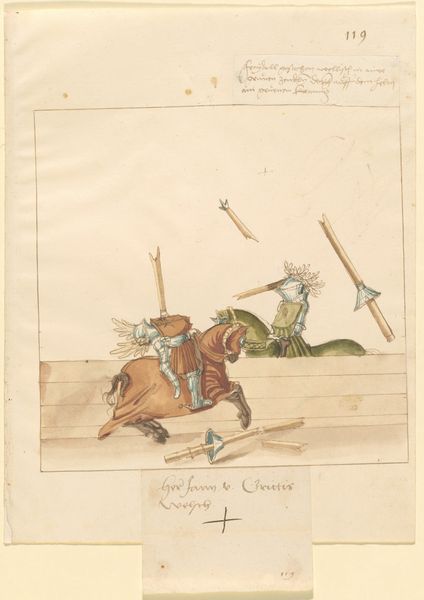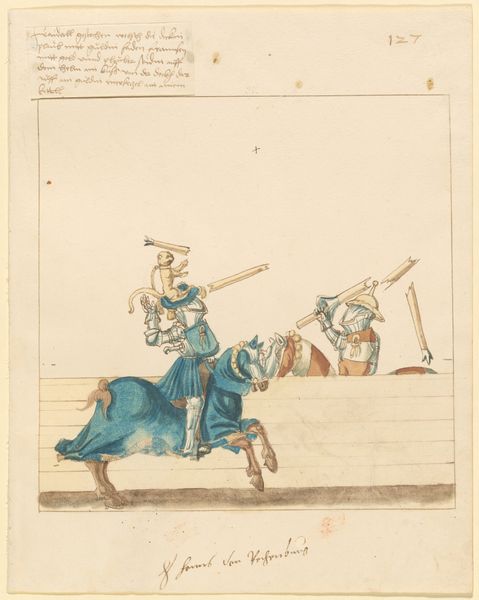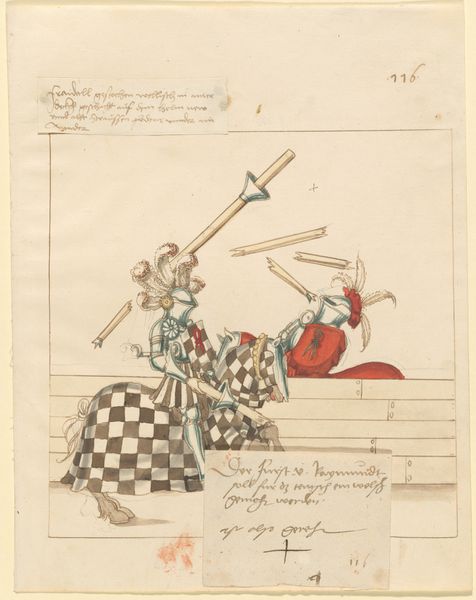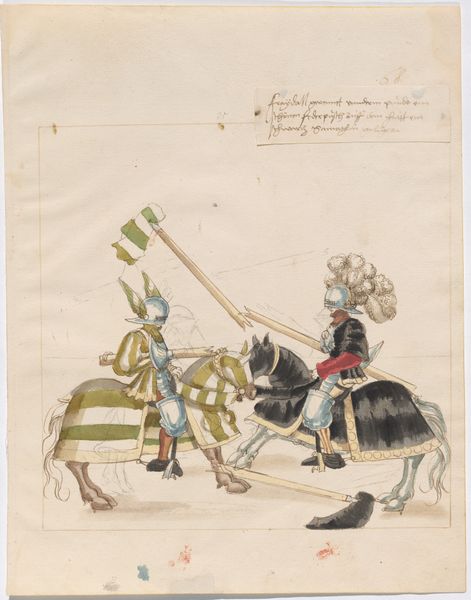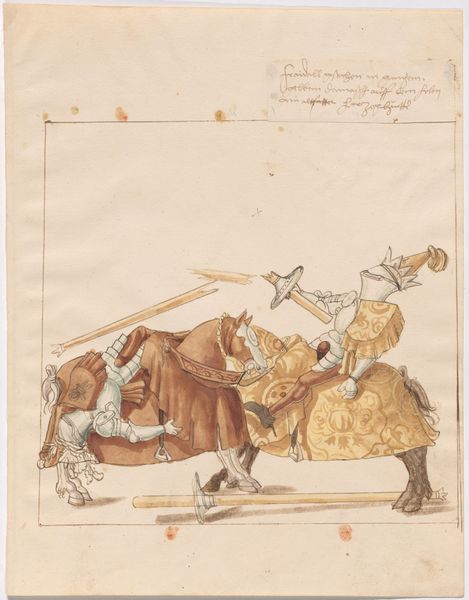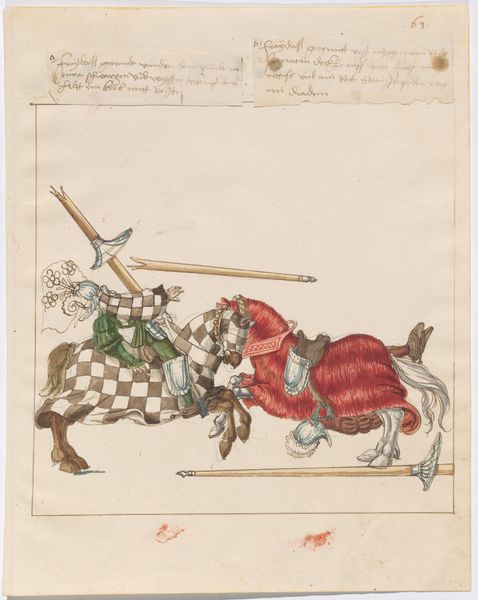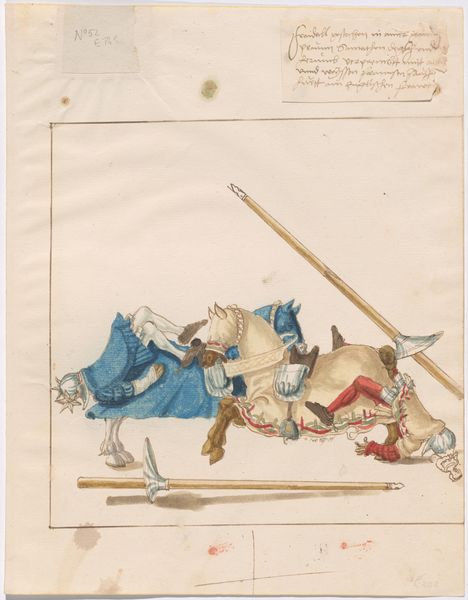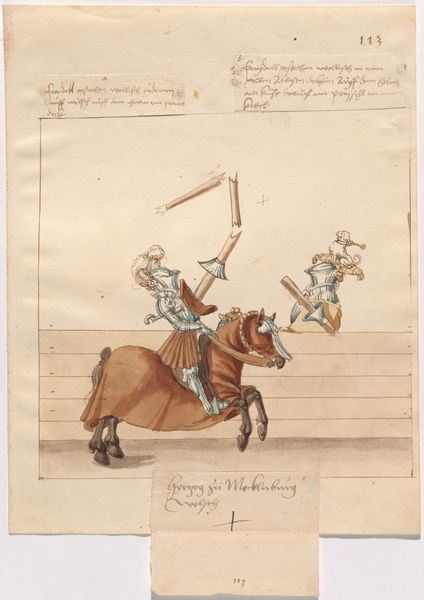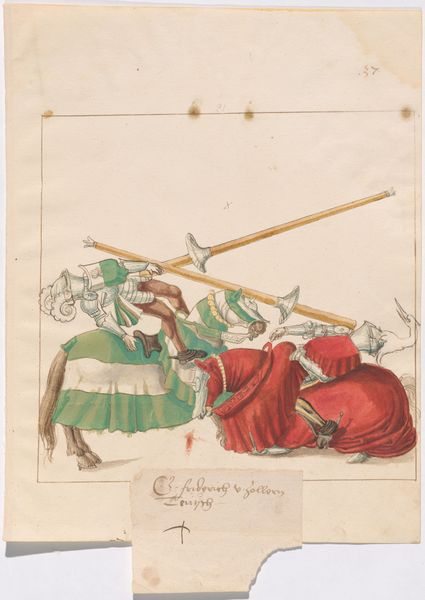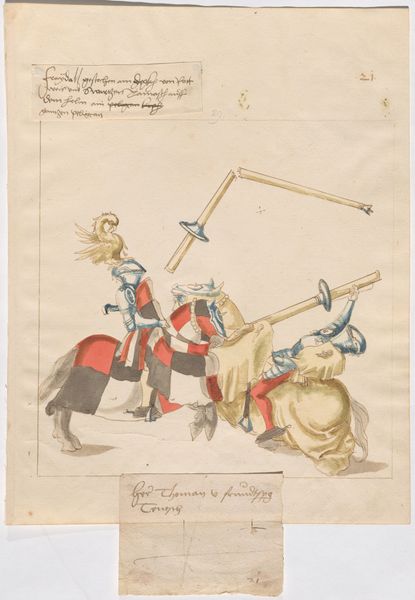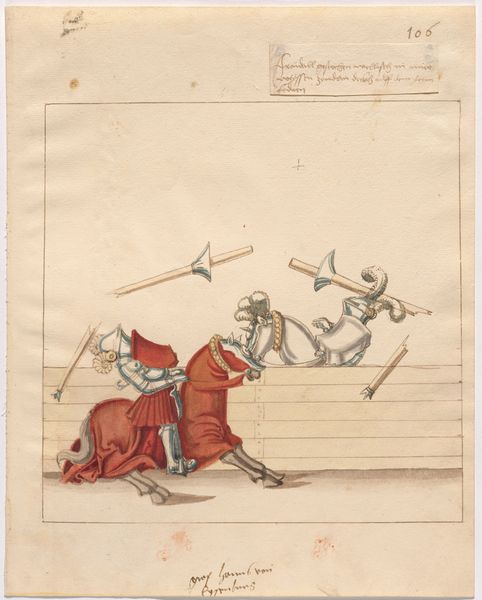
drawing, coloured-pencil, watercolor
#
drawing
#
coloured-pencil
#
water colours
#
narrative-art
#
watercolor
#
coloured pencil
#
history-painting
#
italian-renaissance
Dimensions: sheet: 33.7 × 26.3 cm (13 1/4 × 10 3/8 in.)
Copyright: National Gallery of Art: CC0 1.0
Editor: This is an intriguing drawing titled "Italian Joust of Peace," dating back to the early 16th century, around 1512-1515. It seems to be rendered in watercolor and coloured pencil, depicting two knights engaged in a joust. The scene appears static, almost theatrical. What do you see in this piece that maybe I’m missing? Curator: It’s crucial to consider this joust within the larger context of Renaissance Italy, a time of both artistic flourishing and intense political rivalry. These jousts, though seemingly about sport, were often elaborate displays of power, wealth, and masculine identity. Notice the detail in the knights' armor and the horses' attire; these were carefully constructed performances of status. What sociopolitical dynamics do you think are being staged here, under the guise of peace? Editor: So it's less about sport and more about… projection? An assertion of dominance? Curator: Exactly. Think about it: peace is not merely the absence of war, but also the active maintenance of social hierarchies and power structures. The "Italian Joust of Peace" may be a performance aimed at solidifying existing relationships between families and city-states through ostentatious spectacle and display of resources. These "games" could often dictate status and reaffirm power, very similar to the Olympics of current days. Does that give you a different reading of the piece? Editor: Definitely. I was so focused on the artistic style that I missed the performative aspect, the way it's showcasing power under the pretense of peace. Now, the broken lances seem more symbolic of carefully managed competition than actual violence. Curator: Precisely. Art offers this intricate window into how societies navigate conflict and maintain social order, where even peace becomes a strategic performance. Editor: It's fascinating how much context changes the meaning. Thanks, I see it completely differently now.
Comments
No comments
Be the first to comment and join the conversation on the ultimate creative platform.
